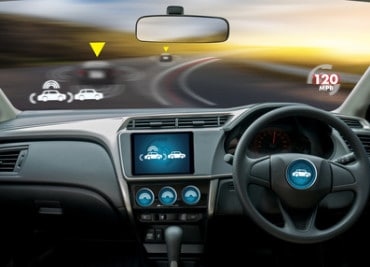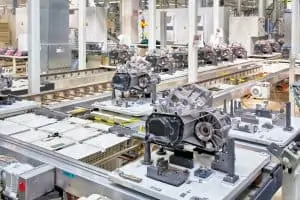
Real-time data may be one of the most underutilized tools in the retail industry. With today’s sophisticated AI-powered POS and inventory management systems, independent retail shops can compete with multinational corporations, function at the highest level, and even grow their market share.
Every decision made by a retail store’s management team has an impact on its bottom line. My father and I know this from personal experience, having run gas stations and convenience stores ourselves for a number of years. Increasingly, the key to success is leveraging real-time data.
Why? For too long, major retail and convenience store corporations have had an advantage over smaller businesses, being able to leverage cutting-edge AI systems to streamline and optimize their Point of Sale (POS) systems, inventory management, and staffing levels in real time. Given the level of competition on this scale, small operators have felt the squeeze and potentially even the pressure of being driven out of business.
The landscape is changing. Sophisticated, AI-driven tools that were once exclusive to enterprise players are now accessible to independent gas stations, convenience stores, bakeries, delis, butcher shops, liquor stores, salons, and quick-service restaurants.
A recent study published in May 2025 shows that incorporating AI-driven POS and inventory management systems can be a game-changer for small retail businesses by “enabling real-time inventory tracking, predictive analytics, and automated stock control.” These systems also give smaller, independent retailers the ability to “streamline inventory management by delivering accurate, real-time insights into stock levels, optimizing restocking processes, and reducing human error.”
Real-Time Pricing for Maximum Profits
One of the most powerful capabilities of AI-driven systems is dynamic pricing, which involves adjusting prices in real time based on customer behavior and demand patterns. This fluctuation in pricing is referred to as “dynamic pricing” in the industry.
While some customers — especially those concerned about rising inflation and costs — may perceive dynamic pricing as a means to quickly boost retail profits, it also presents ways for them to share in its value with businesses that implement it. For instance, booking a reservation with a hotel that employs a dynamic pricing strategy allows customers to see how factors such as seasonal demand and the timing of reservations affect prices, thereby boosting confidence and reducing the likelihood of them canceling their reserved room.
To better illustrate how dynamic pricing works in the retail industry, allow me to use a hypothetical scenario as an example. Imagine a customer buys a large quantity of one product. The system detects a shortage risk and automatically raises the price to reflect demand. If another product has been languishing on the shelf, the system can start marking it down, encouraging it to move.
Essentially, dynamic pricing makes space for merchandise that is performing better, thereby increasing its overall profitability. When coupled with AI-powered POS systems, this practice also ensures that inventory is being managed as efficiently as possible.
See also: Retailers Embrace AI to Transform Operations in 2025
Superior Inventory Management
If a given product becomes unexpectedly popular, today’s AI-based POS systems can accelerate reordering to minimize the possibility of stockouts, as well as the disappointed customers and missed transactions that come with them. Meanwhile, as the shelf empties out, the software can notify management to send a staff member to replenish the shelves.
These solutions also decrease the chances of overstock. If a product isn’t moving as quickly as usual, the system can place a delay on reordering until the retail establishment’s supplies reach a more optimal level. By operating in this way, every inch of the store’s shelf space is used to the maximum extent at all times.
Similarly, these new tools can identify the types of anomalies that may suggest instances of theft or fraud. Management can then investigate these issues and implement solutions to reduce shrinkage.
See also: Real-Time Visual Intelligence in Retail
Eliminating Human Error
Another significant advantage of these systems is that they reduce human error. If a night-shift worker enters the wrong digit into a key column on an order spreadsheet, it can mess up crucial calculations.
However, when an AI-powered POS system automatically tracks and updates the inventory in the relevant software, it prevents that kind of human error from happening in the first place. Furthermore, store staff are freed up to take care of customers and perform other tasks that benefit more from a human touch, such as fostering or acquiring new partnerships with vendors.
Speaking of that staff, some of these AI-powered POS systems can even help optimize and generate the best schedules for store staff. The ability of these systems to respond in real time to conditions on the ground also means that, if someone calls in sick, they can immediately suggest a replacement.
But that’s not all. Perhaps the most exciting development is predictive analytics.
Seeing the Future with Predictive Analytics
Today’s AI-powered POS and inventory management systems can use historical data to generate accurate forecasts for likely future trends. For instance, the system can identify that certain flavors of beverages tend to become more popular in a given season — such as lemonade in the summer and pumpkin spice in the fall — and recommend stocking up at the optimal time to capitalize on customers’ preferences. It can also scrutinize the data to determine the optimal amount to buy, as well as when the most advantageous time would be to place that order.
In the past, management had to make decisions based on numbers that were already out of date, which often resulted in subpar outcomes. Now, management can feel confident that they have the most up-to-date and reliable information, enabling them to make the best and most informed decisions possible.
Function at the Highest Level with AI-powered POS systems
Real-time data may be one of the most underutilized tools in the retail industry. The era of manual spreadsheets and delayed reporting should be a thing of the past. Today, independent shops have access to the same kind of intelligence once reserved for corporate giants.
Independent retail shops can now have access to their own AI transformation at a surprisingly low monthly rate. These systems pay for themselves many times over.
Small business owners no longer need to fear being left behind. With today’s sophisticated AI-powered POS and inventory management systems, independent retail shops can compete with multinational corporations, function at the highest level, and even grow their market share.






























